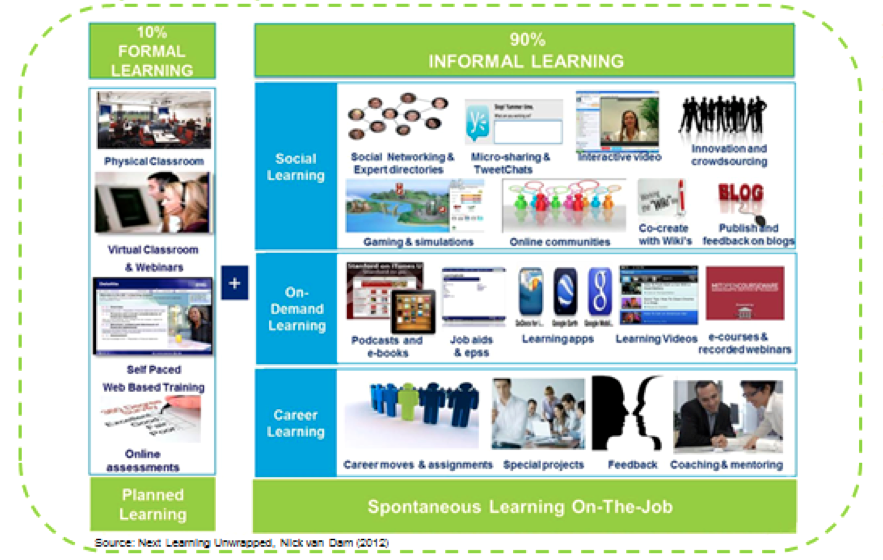Learning and development teams will need to enable learners “any time, any place and on any device”, according to Jonathan Eighteen, manager, people and programmes at Deloitte.
Presenting on the recent Lumesse/Deloitte webinar, Accelerating Learning Effectiveness, Eighteen said that the next wave of learning will include more immersive simulations, case studies and other engaging activities that not only stimulate the learner during the experience but also create a far greater transfer of new skills.
He said learning would look more like a 90:10 model with 10% of learning being formal and the rest informal, spontaneous on the job learning.
“Custodians of learning strategies need to embrace this formula if they are to equip employees for future roles,” he said.
Eighteen shared research findings from Talent 2020: Surveying the talent paradox from the employee perspective – a survey of more than 500 employees from large organisations.
The research showed that although 80% of employees planned to stay with their current employer, 31% are not satisfied with their jobs.
In order for organisations to build capability and retain talent, Eighteen said employees will need more meaningful work which makes the most of their skills. They will also need to develop leaders who can communicate effectively and execute on strategy. Trust in leaders is also critical for employees.
Director of Learning at Lumesse, Thomas Berglund said that Lumesse research into the learning priorities of more than 750 HR leaders showed that only 53% of large organisations consider themselves capable of delivering the training and development required to help them keep up with the rapid changes impacting on their business.
He added that 32% of employees feel insecure about their job because of their lack of skills and knowledge.
Berglund said organisations can overcome these challenges by adopting a more agile approach to learning with a focus on learning enablement rather than learning management.
Agile learning is based on identifying learning needs, development and delivery in an iterative and incremental way. Requirements and solutions would evolve through collaboration, he said.
Lumesse has launched the next iteration of its learning management system, Learning Gateway 6.0, as a portal to enable more rapid development and deployment of learning content. Berglund said learning Gateway 6.o enabled organisations to build their own learning portals to enable programmes, roles and different initiatives in minutes rather than weeks.
Berglund and Eighteen provided 10 tips on moving towards a more agile approach to learning:
- Vision first – revisit your vision of what learning is doing in your organisation
- Lead from the top
- Align HR strategies with business strategies
- Upgrade your approaches
- Change the mindset from managing to enabling
- Follow the learning growth model – this was a model Berglund shared in the webinar and which you can see more of in the recording
- Use technologies where they fit
- Choose the right partner
- Experiment – be agile yourself
- Measure what matters




